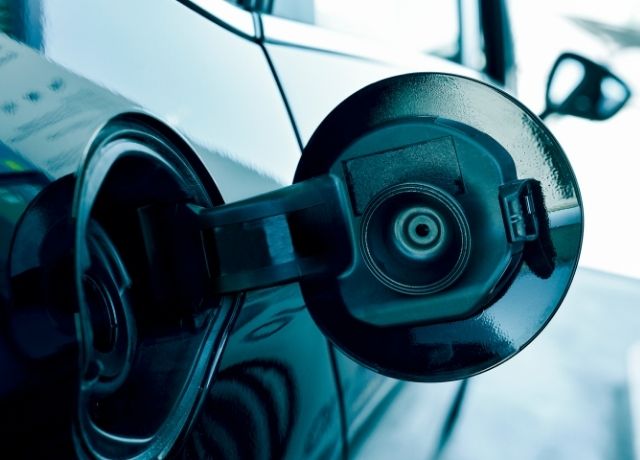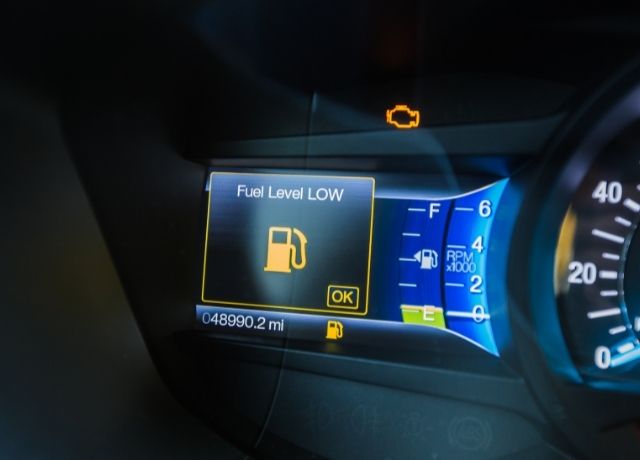Table of Contents

Any combustion-based engine would be incomplete without a fuel tank. A constant supply of fuel for the engine is maintained by the fuel tank. Over time, fuel tanks tend to accumulate dirt, debris, and other contaminants that can affect the engine’s performance. Constant fuel tank cleaning will keep this from happening.
Taking the fuel tank out of the vehicle or machine was the only option for cleaning it in the past. This method, however, required a lot of time and effort. Removal and reassembly both carried the possibility of causing harm to the gasoline tank. Thankfully, new technologies have made it possible to clean a fuel tank without having to remove it.
In this article, we’ll teach you how to clean fuel tank without removing it, as well as why you should do so. We will also discuss the fuel system’s components to help you understand their roles and the challenges inherent in cleaning a car’s fuel tank.
How to Clean a Catalytic Converter Without Removing It Immediately in 2022

Dirty Fuel Tank Symptoms:
If you’re unsure whether your car’s fuel tank is dirty or not, some symptoms will indicate that it needs to be cleaned. Almost the majority of the symptoms are related to the car’s performance. Let’s go through them one by one:
Bad acceleration: Many individuals report bad acceleration shortly before cleaning their fuel tank. A decrease in acceleration and power might be caused by debris and silt in the fuel tank clogging the injectors. This may become obvious while starting out of a stop or making an overtaking attempt.
Wrong gas sensor reading: Your car’s petrol gauge will likely give you an incorrect gas gauge reading if it’s been sitting in a tank full of corrosion, dust, and grime. The gauge plate needs to be replaced or thoroughly cleaned for accurate results.
Difficulty starting the engine: A contaminated or dirty gas tank will make it difficult for the fuel pump to deliver fuel into the engine on the initial start. Starting the car needs a specific level of fuel pressure, which is supplied by the fuel pump. In this situation, the pump will not be able to create the required fuel pressure to start the car.
Engine shuts down: Since the contamination in the gasoline is caused by the unclean fuel tank, you may experience a sudden stop of the engine while it is running because the combustion chambers can’t work with polluted fuel. As a result, it is unable to produce the desired power. As a result, the combustion process is disrupted, and the engine shuts down.
Other Dirty Gas Tank Symptoms:
If your car’s temperature rises, it could be due to a faulty fuel pump. If this occurs, your pump may be deteriorating and will need to be replaced or cleaned.
If your car begins to burn more gas than usual. When the fuel pump is going to fail, the engine fuel system receives more fuel than is necessary. If there is a disparity in gas mileage, this could be a warning indicator.
If you have any of the above-mentioned dirty gas tank symptoms, it is time for you to learn how to clean fuel tank without removing which can be done as follows:

How to clean fuel tank without removing:
Now that we understand the importance of routinely cleaning the car fuel tank, we can go on to learn the best practices for doing so. It’s widely agreed that this is the safest and most effective method for removing contaminants from fuel tanks.
In this section, we’ll go through the specifics of how to clean a fuel tank without removing it. Furthermore, you will finally learn how to clean a rusted gasoline tank. Just make sure you’re following all safety procedures and operating in a well-ventilated area, as fuel is a highly flammable chemical.
Read The Manual To Clean a Fuel Tank:
Before you begin, consult the instruction manual to learn how to disconnect the fuel tank lines. This step is critical because the car’s fuel tank lines differ depending on the make and model.
Step-1: Disconnect the Fuel Lines:
Disconnect the fuel filter and engine fuel lines from the car fuel tank after reading the instructions in the manual. Be certain that the fuel tank’s connections have been entirely removed. Verify that none of the links have been broken.
Step-2: Drain the Fuel Tank:
Take the gas out of the tank after you’ve disconnected the fuel lines. You can drain the petrol from your car in one of two methods. In order to completely empty your gas tank, you can either drive your vehicle until there is no more petrol in the tank, or you can pull the drain port on your car’s fuel tank.
If you want to use up all the petrol in your car before going anywhere, you can start it in the garage and leave it running. The petrol can also be drained from the car fuel tank more quickly by jacking up the vehicle on one side.
Step-3: Degrease the Fuel Tank:

Make sure your car has been properly drained of gas before you move to this step. The next thing to do would be to use any kind of degreaser or any other kind of fuel system cleaner. Mixing some hot water and vinegar to clean fuel tank would be a good substitute for a degreaser.
Various people also recommend using Vinegar and baking soda to clean fuel tank, as this will create a solution with great cleaning abilities.
It is recommended that you wait at least 24 hours after adding the mixture to your car’s fuel tank. You need to let this sit in order to flush out the detox and other substances. You can do this process again if there is still a smell coming from the petrol tank.
Step-4: Use High-Pressure Water to Clean a Fuel Tank:
You can flush out detox through the drain port once you’ve reached a fuel mixture you’re satisfied with. Use a pressure washer and get rid of all the dirt, corrosion, and filth in the tank.
To remove rust from the fuel tank’s interior walls, try tilting the sprayer at various angles. Use goggles to protect your eyes from flying particles.
Step-5: Add a Cleaning Solution and Leave It:
There is certainly still grime or rust in your fuel tank. You’ll need a specialized fuel system cleaner for this. Rust can be easily removed with the help of specialized cleaning products.
The filth and grime should be easily washed away after applying the cleaning solution. Use some high-quality acid-based cleaning products, such as those found in commercial establishments.
At least five hours of sitting time are recommended before beginning to clean up after the cleaning solution has been applied. You can save yourself some time by letting the solution sit for just two hours.
Step-6: Rinse and Dry the Fuel Tank:
Be sure to give your tank a good soaking with water. In order to remove the smell of petrol, spray the area thoroughly with water. Do not refill the tank until it has dried out completely in the open air.
This may require waiting up to 48 hours for the petrol tank to dry up entirely. As soon as you’ve done that, you may simply reassemble the parts you disassembled earlier.
Still, if you are confused and unable to clean a fuel tank, you can watch this video. Hopefully, this will resolve all of your confusion.

Safety Precautions to Take While You Clean a Fuel Tank:
Many gas tank rust remedies use harsh chemicals or abrasives in their ingredients. When you are working with any such chemicals, including fuel, you should wear face safety equipment and take the following precautions to ensure your safety:
- Wear safety glasses and a face mask to protect yourself.
- To prevent concentrated vapors, work in an open environment with plenty of air.
- Do not mix items unless instructed to do so by the manufacturer; chemical reactions can take place.
- Before removing the gas tank or utilizing any combustible product, be sure that all heat and electricity sources are removed from the area.
- While working on the gas tank, properly store fuel and gasoline.
- Keep a hose available while working with strong chemicals such as acids.
- You avoid the spillage of potentially toxic substances, make sure to fill up all of the openings in the gas tank.
You should park in a safe and well-ventilated area before beginning any rust removal procedure. Then, empty all of the gasoline from the tank, disconnect the fuel lines, and finally, remove the gas tank from the car.
What Happens When You Don’t Clean a Fuel Tank:
Cleaning the unclean gas tank is an important step that must be completed in order to avoid damaging any of your car’s fuel system components. A dirty fuel tank hurts the fuel system components and the ultimate vehicle performance.
In the last section, we learned how to clean fuel tank without removing it. But what happens when you continue driving a car with a polluted gasoline tank? Let’s find out:
Clogged Fuel filter: The fuel filter is one of the most sensitive components since it contains a very fine filtering membrane. If the fuel entering the tank contains dirt and debris, the fuel filter could become blocked. Then you’ll have to change the fuel filter, which you definitely don’t want to do.
Overloading the fuel pump: Because the fuel pump is the equipment that pushes fuel directly from the fuel tank into the fuel pipes and then to the fuel injectors, it must have a particular level of pressure to do so.
A dirty gas tank and clogged fuel filter make the pump work harder to get to the pumping level. The pump could overheat as a result of this and stop working. The loss of pump pressure is another potential source of engine performance issues.
Irregular gas spraying: If ultra-fine dirt particles that can pass past the fuel filter reach the fuel injectors, which spray the fuel into the combustion chamber to ensure full combustion and the lowest gas consumption, they may clog the fuel flow.
Hence, the injector’s performance may degrade or stop altogether. There could be a motor issue or the spray pattern could change, leading to inefficient combustion. Also, this will make your car consume more gas.

Benefits of Cleaning the Fuel Tank:
Keeping your petrol tank clean will save you the trouble of having to remove it from your vehicle. It’s recommended to clean the petrol tank at least once a year.
By doing so, we can prevent global carbon levels from rising too quickly. This prevents the petrol tank from rusting out as rapidly, which in turn helps the fuel filter last longer without getting clogged. Having a frequent cleaning process is crucial if you want to keep the components of your car in good condition.
It’ll take a lot of money to put things back the way they were. You may get more mileage out of your fuel by using a fuel stabilizer in your vehicle or one of the many fuel-enhancing solutions on the market. Hence, the dirt will be broken down and the gasoline lines will remain clean.
FAQs
Q: Is It Required To Clean The Gasoline Tank?
With continued use, grime settles to the bottom of your petrol tank and must be removed before further use. The gasoline pump and fuel filter should be protected from this sludge. It is sediment, rust, dirt, and debris that makeup sludge.
Any impurities that may have built up in the petrol tank overtime must be eliminated. If you don’t take care of it, it’ll decrease your car’s performance and could lead to costly repairs.
Q: How Much Does It Cost To Clean The Fuel Tank?
What kind of car or truck are you trying to flush your fuel tank for? For a professional fuel flush, you can expect to pay between $400 and $1,500. A new set of fuel injectors costs money.
This does not include the price of that. As a matter of fact, this is not just the price with no labor. Why not do it at home if you have the means to do so? Costs will also vary from state to state.
Q: How Do You Flush A Gas Tank In A Car?
This procedure begins with the safe utilization of gas in your fuel tank. The gasoline tank must next be thoroughly degreased using soapy soap and hot water.
Following that, using a fuel system cleaner solvent will assist you in removing carbon build-ups, dirt, dust, grime, sticky spots, and rust.
The filth should then be washed away with water and later on let dry completely. After that, replace the pipes and hoses and refill them with fresh, and clean gas.
Q: Can Vinegar Be Used To Clean A Gas Tank?
Because vinegar contains acetic acid, it can be used to remove rust from the inside of a gas tank. This is done by filling the gas tank with water and vinegar to clean fuel tank properly. Let the solution sit overnight to dissolve the rust.
Q: What Kind of Vinegar One Can Use To Clean A Fuel Tank?
Ideally, White Vinegar is best to be used because of its cleaning abilities. It is best known for the cleaning process and removing rust from metals. However, If you don’t have white vinegar available, you can use any vinegar. Keep in mind the other type of vinegar may require more time to clean the fuel tank properly.
Q: How Often Should The Gasoline Tank Be Cleaned?
In general, any vehicle manufactured in 2004 or after should go through a fuel tank cleaning every 45,000 miles or three years. However, older models may require more frequent cleaning process of the fuel injectors for optimal engine efficiency.
Q: Can We Use Vinegar And Baking Soda To Clean Fuel Tank?
You must use vinegar and baking soda to clean fuel tank. The combination of both creates an extremely powerful cleaning process. Allow the solution to sit until it begins to bubble and change color with the rust particles. Then thoroughly clean it to ensure it’s fully empty.
Conclusion
In conclusion, removing the fuel tank is not necessary to clean it. Follow the mentioned steps to knock out any debris or dirt on the walls of the tank. This is a more cost-efficient solution than removing the fuel tank, but be sure to let it dry thoroughly before filling up with gas. This was all from the topic of how to clean fuel tank without removing it. Visit our site to read more informational guides like this. Thanks!



























































13 thoughts on “How To Clean a Fuel Tank Without Removing In 2023 – Flawless Car Guide”